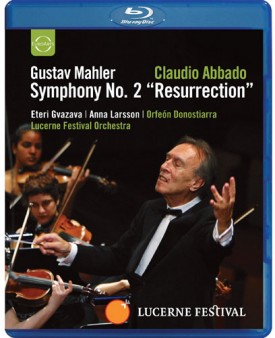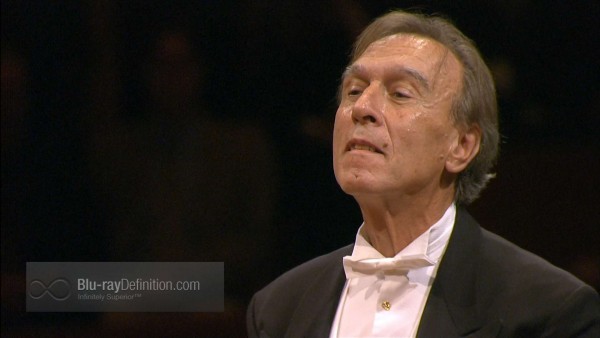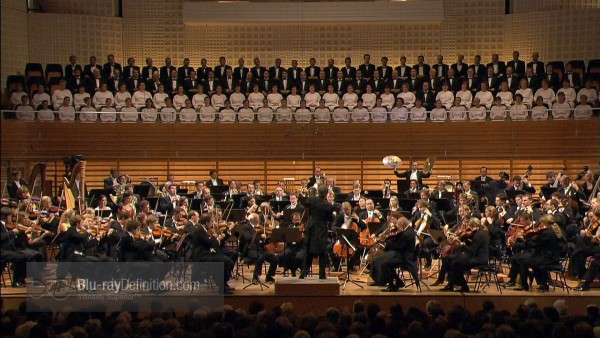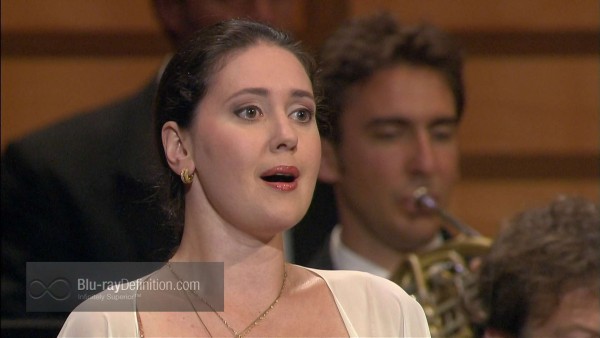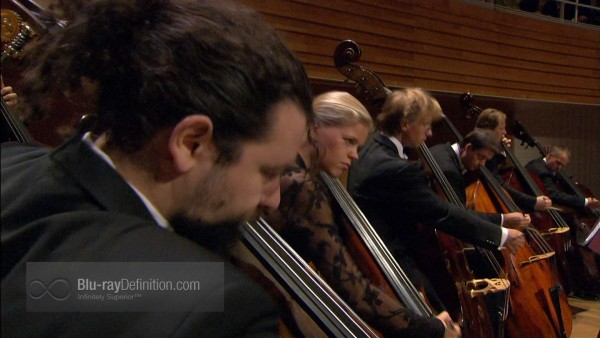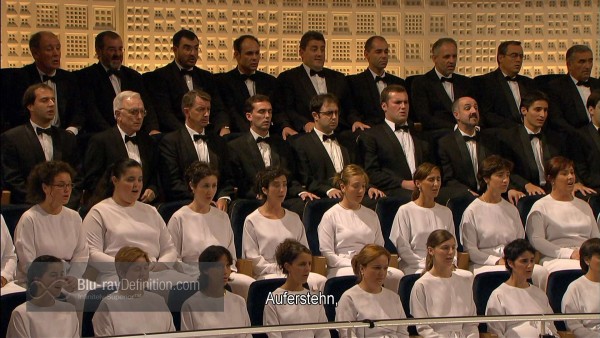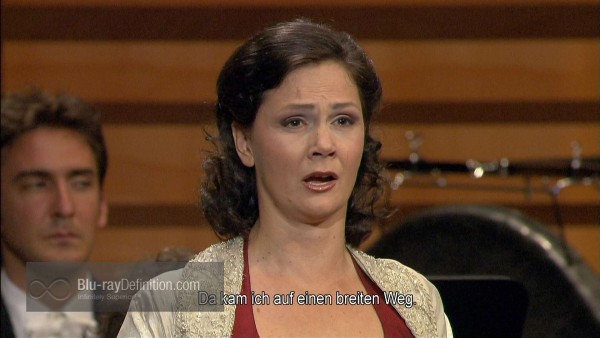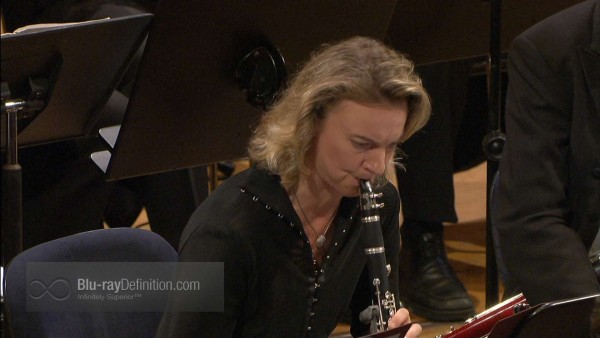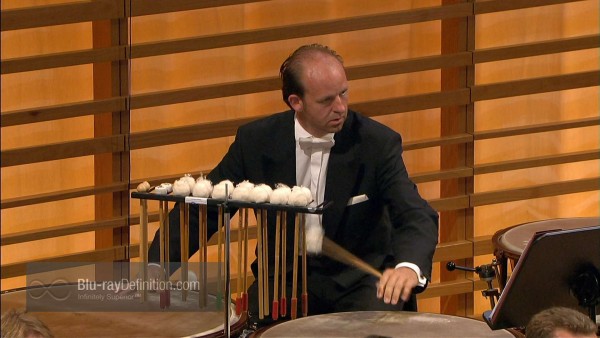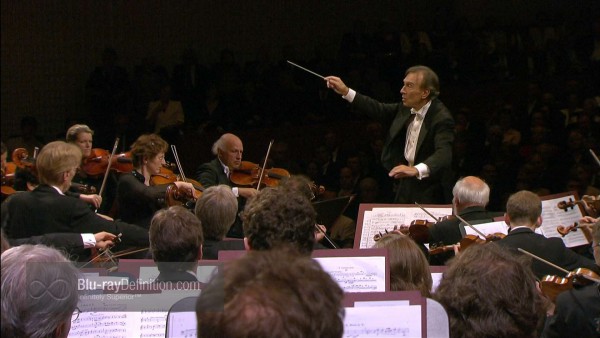- Aspect Ratio: 1.77:1
- Video Codec: AVC/MPEG-2
- Resolution: 1080i/60
- Audio Codec: PCM 2.0 Stereo; DTS-HD Master Audio 5.1
- Subtitles: English, French, German, Spanish, Italian
- Region: A
- Rating: Not Rated
- Discs: 1
- Studio: EuroArts
- Blu-ray Release Date: September 28, 2011
- List Price: $39.99
[amazon-product region=”uk” tracking_id=”bluraydefinit-21″]B003X859FC[/amazon-product]
[amazon-product]B003X859FC[/amazon-product]
Shop for more Blu-ray titles at Amazon.com
Overall
[Rating:4/5]
The Performance
[Rating:4.5/5]
Video Quality
[Rating:4/5]
Audio Quality
[Rating:4/5]
Supplemental Materials
[Rating:0/5]
Click thumbnails for high-resolution 1920X1080p screen captures
(Screen captures are lightly compressed with lossy JPEG thus are meant as a general representation of the content and do not fully reveal the capabilities of the Blu-ray format)
–
The Performance
[Rating:4.5/5]
Being the centennial year of Mahler’s death, 2011 has ushered in a raft of symphonic BDs, including several performances of Symphony No. 2, the “Resurrection.” This is a large-scale work with soprano and contralto soloists, backed by a substantial chorus. Claudio Abbado, an established Mahlermeister, leads his Lucerne Festival forces in this 2003 production. The Mahler Symphony No. 2 presents a growing musical arc, starting with traditional orchestral movements and finishing with movements for soloists and chorus. Mahler was to use this choral symphonic format again with his 3rd, 4th, and 8th symphonies.
Those familiar with the Abbado approach to Mahler will appreciate his highly personal, intimate engagement with the orchestra which features some outstanding first chair artists, like clarinetist Sabine Meyer, flautist Emmanuel Pahud, and cellist Natalia Gutman. The soloists are Russian soprano Eteri Gvazava and Swedish mezzo-soprano Anna Larsson. The videography under the world-class direction of Michael Beyer conveys effectively this piece’s fundamental spirituality. The sound engineers do not disappoint in producing good hall effects and honest presentation of the players and vocalists.
Video Quality
[Rating:4/5]
I have now seen a number of EuroArts BDs shot during the Lucerne Festival, and like its predecessors, this one covers the waterfront extremely well. There are the obligatory close-ups of maestro Abbado and his singers but the camera movement is just enough to keep up with the measured pace of the performance. Details are decent with just a hint of softness around the edges and the color palette, darn good for a nearly ten-year video.
Audio Quality
[Rating:4/5]
Recording a large work like this in a modest-sized hall requires complete mastery of the console to prevent the wash of sound from overwhelming the small but important details that Abbado seems to relish. Here, I am happy to report, the audio engineers pretty much get it right. It is only in the tutti sections that things get a bit congested. There is good ambience, a very good sense of orchestral presence, and the soloists are well recorded without being overly prominent. The finished product puts the listener in a good (and probably quite expensive) middle of the orchestra row seat.
Supplemental Materials
[Rating:0/5]
I am a bit disappointed that EuroArts chose not to include extra material on the Lucerne Festival and its orchestra which, in 2003, was playing its first formal season on conductor Abbado. There are simply four trailers for other BDs.
The Definitive Word
Overall:
[Rating:4/5]
Mahler’s Symphony No. 2 lends itself to a variety of individual interpretations. I have at least a dozen in my LP/CD collection, including an earlier one with Abbado leading the Chicago Symphony Orchestra. Fans of this maestro will probably consider the current BD as self-recommending. However, there is strong competition, particularly from a recently reviewed Accentus BD featuring Ricardo Chailly and his Leipzig forces. This much more recent disc (recorded during the 2011 Mahler festival) benefits from better video and audio recording. I also preferred Chailly’s soloists to the duo in the present performance. As far as the conductor’s approach to this monumental symphony, this will be a matter of taste for potential buyers. Abbado scores points for highlighting small details of the score and delivers a somewhat scaled-down approach compared to that offered by Chailly. The Abbado performance delivers a substantial measure of this work, and those seeking an excellent Mahler Second would not go wrong here. However, Chailly takes this symphony to a more celestial level, approaching the sublime. In the best of all possible worlds, I would have both BDs in my library, since I don’t think that you can get too much of a good thing.
Additional Screen Captures
–
[amazon-product region=”uk” tracking_id=”bluraydefinit-21″]B003X859FC[/amazon-product]
[amazon-product]B003X859FC[/amazon-product]
Shop for more Blu-ray titles at Amazon.com
Overall
[Rating:4/5]
The Performance
[Rating:4.5/5]
Video Quality
[Rating:4/5]
Audio Quality
[Rating:4/5]
Supplemental Materials
[Rating:0/5]


